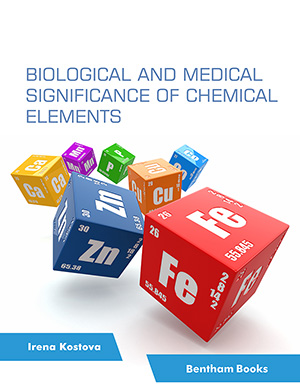Abstract
Introduction: Lung carcinoma presents an aggressive evolution, with its carriers having reduced survival. Late diagnosis is one of the main factors of death. In the neoplasia in question, there is an established correlation with increases in Alpha-Fetoprotein (AFP) serum concentrations.
Methods: Commonly used diagnostic methods are invasive or inaccessible. Therefore, a low-cost, non-invasive method would be extremely promising, and biomarkers can be used to achieve this goal. Electrochemical biosensors are a promising approach for detecting analytes of clinical interest using innovative bioreceptors. In this work, we obtained an electrochemical biosensor based on a hybrid ligand metal-organic structure (ZIF-8-905%) and functionalized carbon nanotubes (MWCNTs- COOH) in association with the lectin Concanavalin A (ConA), as a biorecognition element for detecting AFP in human serum from patients with lung carcinoma. Cyclic Voltammetry (CV), Square Wave Voltammetry (SWV), and Electrochemical Impedance Spectroscopy (EIS) were used to characterize the development of this biosensor. Microscopic analysis through Atomic Force Microscopy (AFM) revealed the formation of ConA-AFP complexes, pointing out the sensor's ability to identify the target analyte.
Results: The blocking electron transfer effect in the electrode-redox pair interface assessed AFP detection. The ZIF-8-905%/MWCNTs-COOH/ConA platform exhibited a limit of detection (LOD) of 7.98 ng/mL, and a limit of quantification (LOQ) of 23.78ng/mL was also estimated. In addition, the biosensor showed excellent selectivity towards interfering biomolecules.
Conclusion: Therefore, the biosensor represents an efficient form of detection, contributing to research that aims to detect tumor biomarkers and ensure better prognoses.
Keywords: Biosensor, MOFs, carbon nanotubes, concanavalin A, alpha-fetoprotein, lung carcinoma.
[http://dx.doi.org/10.1016/j.chest.2015.09.003] [PMID: 26965975]
[http://dx.doi.org/10.1186/s12957-020-01894-9] [PMID: 32473655]
[http://dx.doi.org/10.1007/s12032-012-0449-8] [PMID: 23307257]
[http://dx.doi.org/10.21037/tlcr.2020.04.02] [PMID: 32676316]
[http://dx.doi.org/10.3390/cancers9110155] [PMID: 29137182]
[http://dx.doi.org/10.1177/1724600819834235] [PMID: 30994045]
[http://dx.doi.org/10.1002/1097-0142(19810301)47:5<926::AID-CNCR2820470518>3.0.CO;2-O] [PMID: 6164468]
[http://dx.doi.org/10.1186/1477-7819-9-47] [PMID: 21554678]
[http://dx.doi.org/10.4046/trd.2012.72.1.72]
[http://dx.doi.org/10.1155/2004/510350] [PMID: 15505704]
[http://dx.doi.org/10.3390/app10186614]
[http://dx.doi.org/10.1149/1945-7111/abe8b6]
[http://dx.doi.org/10.1038/s41598-017-01371-6] [PMID: 28469128]
[http://dx.doi.org/10.1016/j.micres.2021.126834] [PMID: 34364021]
[http://dx.doi.org/10.1016/j.bej.2023.109116]
[http://dx.doi.org/10.1016/j.talanta.2019.120338] [PMID: 31816752]
[http://dx.doi.org/10.3390/s21041109] [PMID: 33562639]
[http://dx.doi.org/10.1021/ja805222x] [PMID: 18754585]
[http://dx.doi.org/10.3390/bios13010040] [PMID: 36671875]
[http://dx.doi.org/10.1002/adfm.201703852]
[http://dx.doi.org/10.1002/smll.202104628] [PMID: 34894080]
[http://dx.doi.org/10.1016/j.jtice.2021.09.034]
[http://dx.doi.org/10.1016/j.talanta.2015.06.010] [PMID: 26452812]
[http://dx.doi.org/10.1021/cm3006953]
[http://dx.doi.org/10.1016/j.microc.2020.105426]
[http://dx.doi.org/10.1039/C7NJ00606C]
[http://dx.doi.org/10.1021/acs.jpcc.5b09520]
[http://dx.doi.org/10.1039/C5CC10171A] [PMID: 26878906]
[http://dx.doi.org/10.1016/j.mseb.2009.05.021]
[http://dx.doi.org/10.1039/c1cc15525c] [PMID: 22037659]
[http://dx.doi.org/10.1016/j.cattod.2014.05.022]
[http://dx.doi.org/10.1016/j.memsci.2017.01.065]
[http://dx.doi.org/10.1021/acsnano.3c09118] [PMID: 38015792]
[http://dx.doi.org/10.1039/D3TB01221B] [PMID: 37650588]
[http://dx.doi.org/10.1002/jccs.200900033]
[http://dx.doi.org/10.1039/D1AY01421H] [PMID: 34755722]
[http://dx.doi.org/10.1038/s41598-022-17286-w] [PMID: 35896810]
[http://dx.doi.org/10.1007/s10800-019-01367-2]
[http://dx.doi.org/10.1016/j.snb.2017.08.001]
[http://dx.doi.org/10.1016/j.snb.2009.12.046]
[http://dx.doi.org/10.1016/j.snb.2020.128077]
[http://dx.doi.org/10.1016/j.trac.2015.09.006]
[http://dx.doi.org/10.1007/978-3-642-02915-8]
[http://dx.doi.org/10.1149/2.F18061IF]
[http://dx.doi.org/10.1002/chem.200305551] [PMID: 15054758]
[http://dx.doi.org/10.1016/j.jpba.2023.115606] [PMID: 37544275]
[http://dx.doi.org/10.1016/j.enzmictec.2022.110088]
[http://dx.doi.org/10.1016/j.microc.2022.108154]
[http://dx.doi.org/10.1016/j.saa.2023.123585]
[http://dx.doi.org/10.1021/acs.analchem.7b04359] [PMID: 29433314]
[http://dx.doi.org/10.1039/C9NJ05870B]
[http://dx.doi.org/10.1088/1755-1315/218/1/012106]
[http://dx.doi.org/10.1007/s00604-019-3403-z] [PMID: 31041529]
[http://dx.doi.org/10.1016/j.bios.2015.01.033] [PMID: 25621998]
[http://dx.doi.org/10.1016/j.aca.2017.04.045] [PMID: 28577596]
[http://dx.doi.org/10.1016/j.jelechem.2019.04.002]
[http://dx.doi.org/10.1016/j.bios.2015.04.032] [PMID: 25897879]































